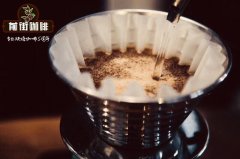Ethiopia Yegashefi Agarobivtu Valley Dina Cooperative washing G1 Flower and Fruit Lover

Professional coffee knowledge exchange more coffee bean information please follow the coffee workshop (Wechat official account cafe_style)
Qianjie-introduction to the Water washing G1 of the Yechuefi Agarobivtu Valley Cooperatives in Ethiopia
In the past, when we mentioned the famous producing areas in Ethiopia, people would think of Cochel in Yegashefi or Guji in Sidamo, but in recent years, new boutique coffee producing areas are on the rise, and their quality is quite amazing. it also has its own unique flavor, Agaro is one of them. Located in the far west of Ethiopia, Agaro is quite high above sea level, and some mountains are even more than 2100 meters high.
Some of the living conditions of the local people, local small farmers live in the community, each family can not allocate much arable land, so they will grow coffee, bananas, avocados and other crops on these arable land. They will also go to the nearby mountains to pick ripe wild fruits to increase income.
Biftu Gudina (or Bifdu Gudina) is a cooperative founded in 2012 in the Agaro region. Biftu Gudina means "development line" in the local language and is located in the Agaro-Agaro-Goma area of the Jimma producing area. The altitude here is very ideal, the natural environment is excellent, the vegetation is very luxuriant. It was founded with the assistance of the international agency Technoserve and now has about 130 members. It is rare that the raw beans produced by the cooperative have been praised by many famous bean bakers in the world since its inception, believing that Agaro is a producing area full of potential and can compete with the traditional Ethiopian producing areas.
But it most directly reflects some basic conditions of the country of origin. Most crops are naturally nurtured on the advantages of climate and geography, although they must be grown organically without a certificate, and there are no pesticides and fertilizers, because farmers simply cannot afford these costs, even if they can afford it. we also have to find another way to solve the problem of transportation.
Bivtugudina uses water washing to treat coffee. The raw beans are made up of microbatches of hundreds of small coffee farmers who grow coffee fruits in semi-wild or all-wild forests and are traditionally grown organically, even though the washing plant does not have a formal organic certification. The original and rough peeling method used by the cooperative, after peeling the pulp, soaking it in a cement washing tank for 24-36 hours, then washing it many times in running water to remove pectin, soaking in clean water for 12-24 hours for simple post-fermentation, and finally drying in sunlight on an elevated drying bed for 10-15 days, during which time manual stirring was used to prevent fruit fermentation from deteriorating.
This Bifutu Gudina from the Agaro region not only has the unique floral and fruit flavor of the Yega Sheffei region, but also has the unique flavor of the Agaro region, with unique and rich ripe currant acidity, floral aroma and multiple layers, which can bring you a new understanding of Yega Sheffield.
Ethiopia Yegashefi Agarobivtu Valley Dina Cooperative washing
Ethiopia Yirgacheffe Agaro Biftu Gudina Washed G1
Producing area: Yega Xuefei
Altitude: 1750-2100m
Variety: Ethiopian native species
Treatment: washing treatment
Flavor: floral, currant, citrus, peach
Knowledge: most coffee grows in the equator between the Tropic of Cancer and the Tropic of Cancer. Coffee planting belt and origin will have a great influence on its flavor.
In short: Qianjie is a coffee research hall, happy to share the knowledge about coffee with you, we share unreservedly just to make more friends fall in love with coffee, and there will be three low-discount coffee activities every month. The reason is that Qianjie wants to make more friends drink the best coffee at the lowest price, which has been Qianjie's tenet for 6 years!
END
Important Notice :
前街咖啡 FrontStreet Coffee has moved to new addredd:
FrontStreet Coffee Address: 315,Donghua East Road,GuangZhou
Tel:020 38364473
- Prev

What kinds of coffee are there in Arabica? the origin of bourbon coffee began to break away from Yemen.
Professional coffee knowledge exchange more coffee bean information please follow the coffee workshop (Wechat official account cafe_style) front street-bourbon variety introduction coffee beans can be roughly divided into Arabica species and Robbins species and other varieties. Today's main introduction is Arabica species, the flavor of this coffee is much more exquisite than other kinds of coffee, at present, the world's boutique coffee is mainly Arabica.
- Next

Whether hand-brewed coffee is American or Italian hand-brewed coffee grindability standard reference
Professional coffee knowledge exchange more coffee bean information please follow the coffee workshop (Wechat official account cafe_style) front street-hand coffee grindness brief introduction we all know that there are many factors affecting hand brewing, grinding degree is also one of the factors, grinding degree generally refers to the size of coffee particles, bluntly
Related
- Beginners will see the "Coffee pull flower" guide!
- What is the difference between ice blog purified milk and ordinary milk coffee?
- Why is the Philippines the largest producer of crops in Liberia?
- For coffee extraction, should the fine powder be retained?
- How does extracted espresso fill pressed powder? How much strength does it take to press the powder?
- How to make jasmine cold extract coffee? Is the jasmine + latte good?
- Will this little toy really make the coffee taste better? How does Lily Drip affect coffee extraction?
- Will the action of slapping the filter cup also affect coffee extraction?
- What's the difference between powder-to-water ratio and powder-to-liquid ratio?
- What is the Ethiopian local species? What does it have to do with Heirloom native species?

